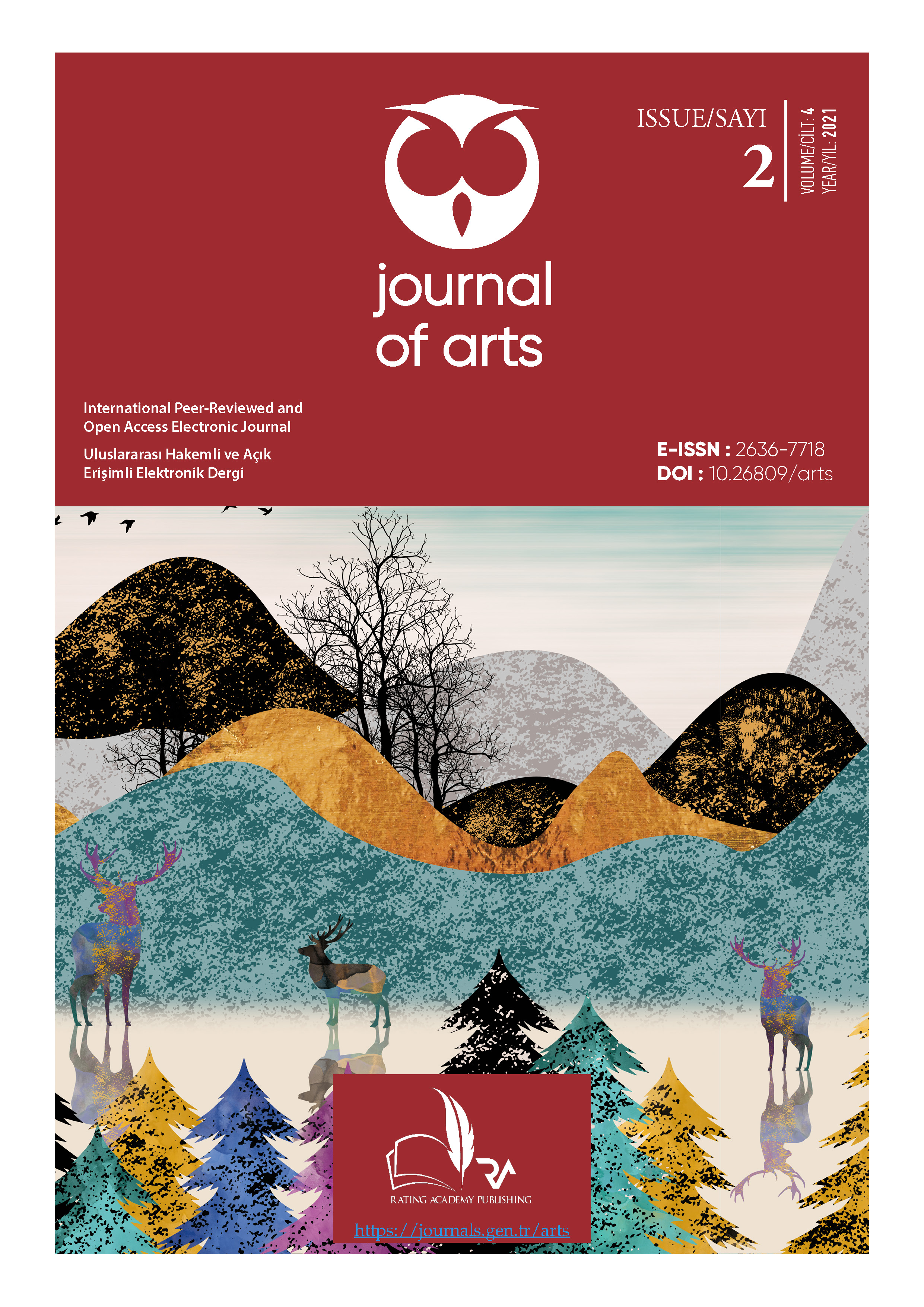Abstract
In Myths; Thev isible world is supported by an invisible world. Myths are based on there quirements of the subconsciousandv it alsphere, while it points to the depth of the imagination of a person who wants a certain worship and attachment. In this case, it shows that it is based on which is lived to get her mythological stories geography and depictions of gods with various cultural differences. Since human beings have fully developed their awareness, they have be gun tounder stand the environmentand interpret the nature in different meanings. Mythological stories dealt with as a subject in art and has found it splace in each period. Mythology, Jung and Freud, such as psychoanalysts are taking the lead in the effective foot steps. It is seen that many artists, especially Dali, dealt with this issue in the Surrealism movement. Max Ernst is one of them ostprominent of these artists. Max Ernst with “The Eye of Silence”, “Europe After Rain II”, “Antipope”; The imaginary land scapes are among the best images of the jarring beauty embodied in the crystal in the imagination of surrealists. These are objectified not from or dinary people, but from the eyes of a creature that exists in nature. The subtext of the works are very rich and encrypted like a puzzle. Them eaning of one eye is variable. On the onehand, according to the physiological position of the eye points to a different side than humanity, on the other hand in mythology, one-eyed giants in the body, brings to mind super human forces. In this study, the iconological analysis of Ernst's “Eye of Silence, Europe After Rain II, Antipope” will be analyzed in the context of myth, mythology and art.
References
CÖMERT, B. (1999). Mitoloji ve İkonografi. Ankara: Ayraç Yayınevi. ISBN: 978944492331
ERGÜVEN, M. (2003). Kurgu ve Gerçek. İstanbul: Gendaş Kültür. ISBN: 9789753084987
EVANS, A. (1974). Olivier Messiaen in the Surrealist Context:. United Kingdom: International Association of Music Libraries.
FORDHAM, F. (2015). Jung Psikolojisinin Ana Hatları. Çevirenler: A.Yalçıner. İstanbul: Say Yayınları. ISBN: 9754680706 KAVKY, S. (2010). Max Ernst in Arizona: Myth, mimesis, and the hysterical landscape. The University of Chicago Press, 221-222
PASERRON, R. (2000). Sürrealizm Sanat Ansiklopedisi. Çevirenler: S. Tansuğ. İstanbul: Remzi Kitabevi. ISBN: 975-140181-X
VESELEY, D. (2018, 12 11). Eskop Sanat Tarihi dergisi.
http://e-skop.com/skopdergi/surrealizm-mit-ve-modernite/1937 [Erişim Tarihi: 01.12.2018].
https://www.kemperartmuseum.wustl.edu/collection/explore/artwork/541 [Erişim Tarihi: 04.04.2019].
https://www.arthipo.com/tr-tr/yagmurdan-sonra-avrupa.html [Erişim Tarihi: 21.04.2019].
https://www.guggenheim.org/artwork/1188, [Erişim Tarihi:25.04.2019].

This work is licensed under a Creative Commons Attribution 4.0 International License.
Copyright (c) 2021 Holistence Publications


